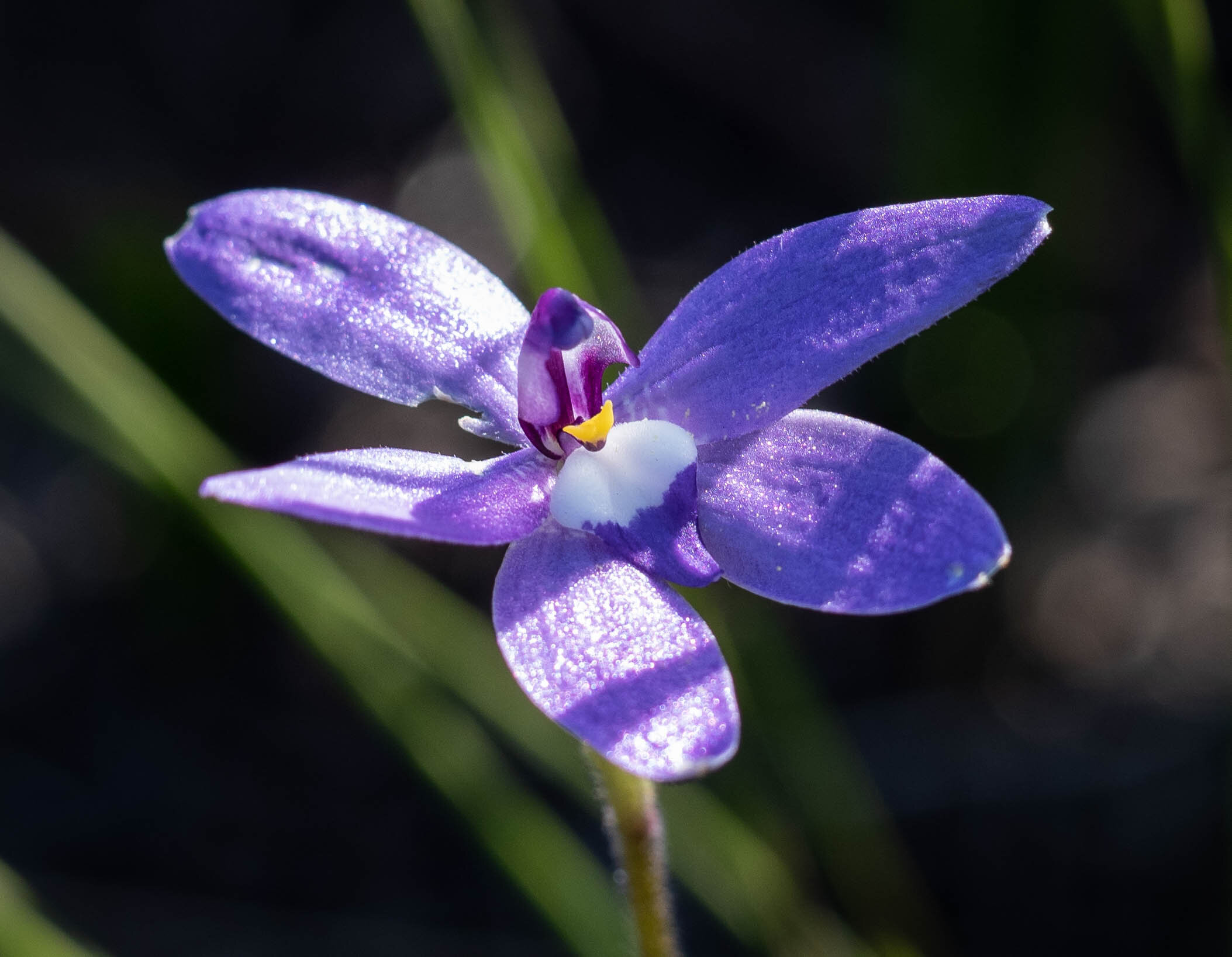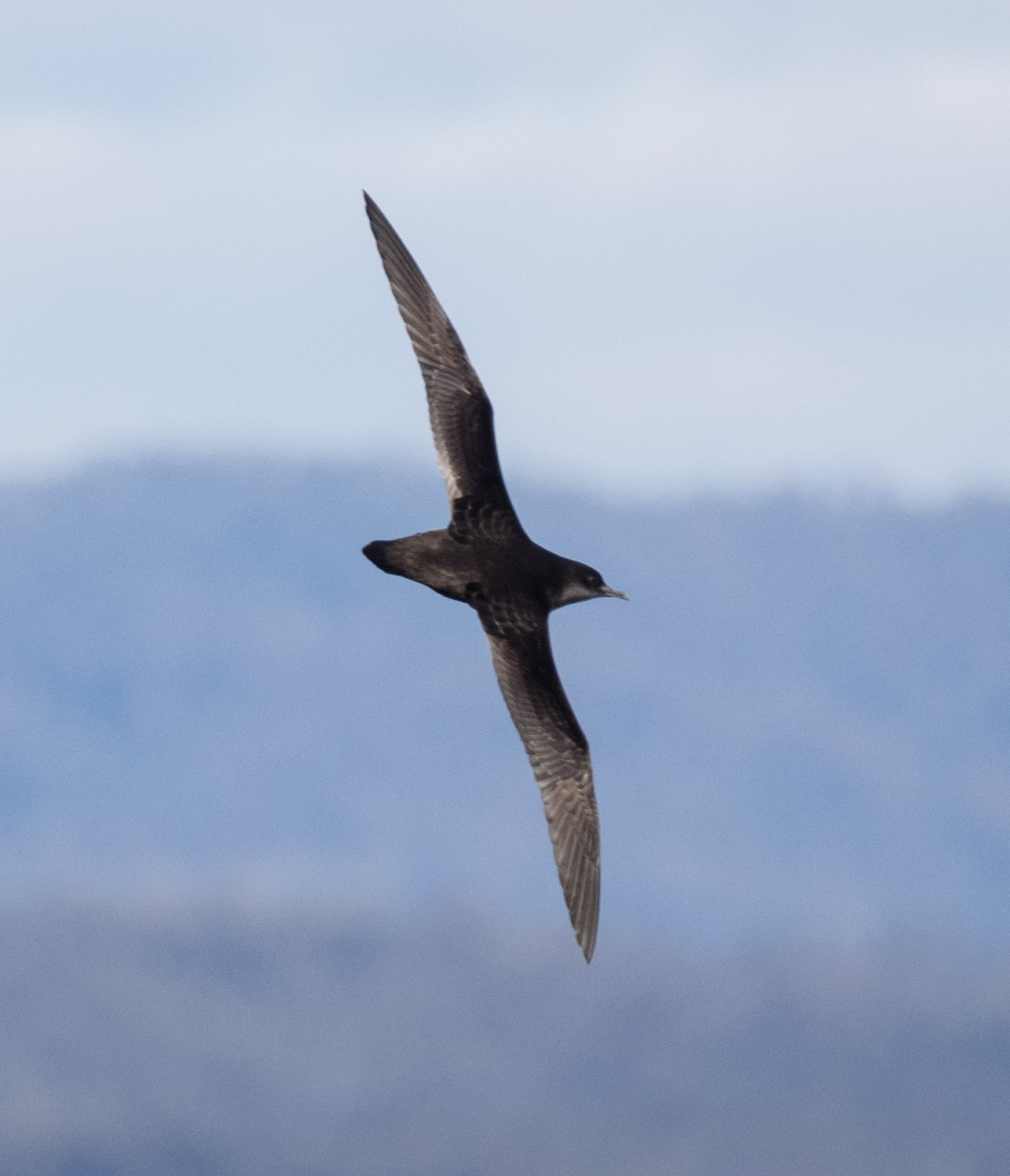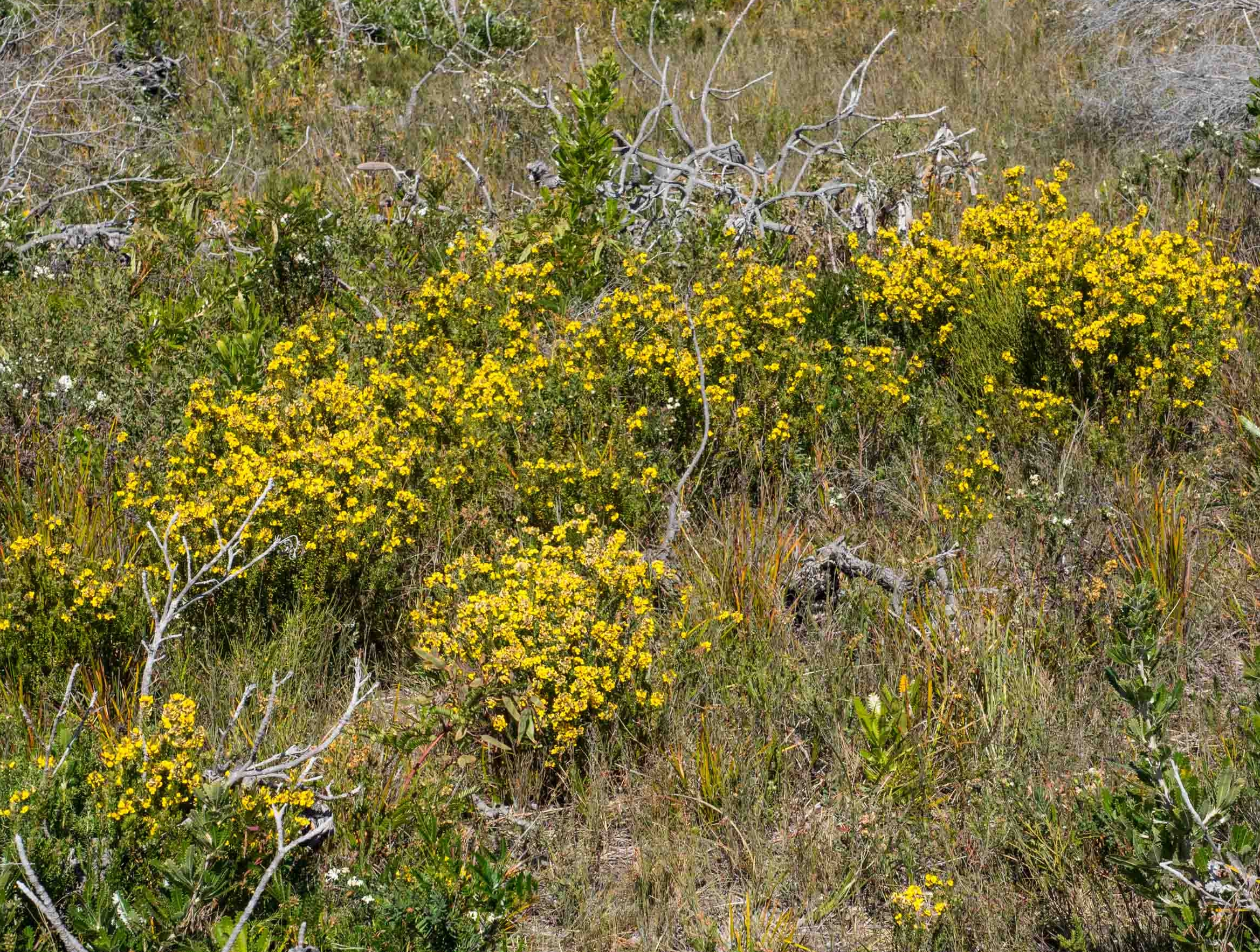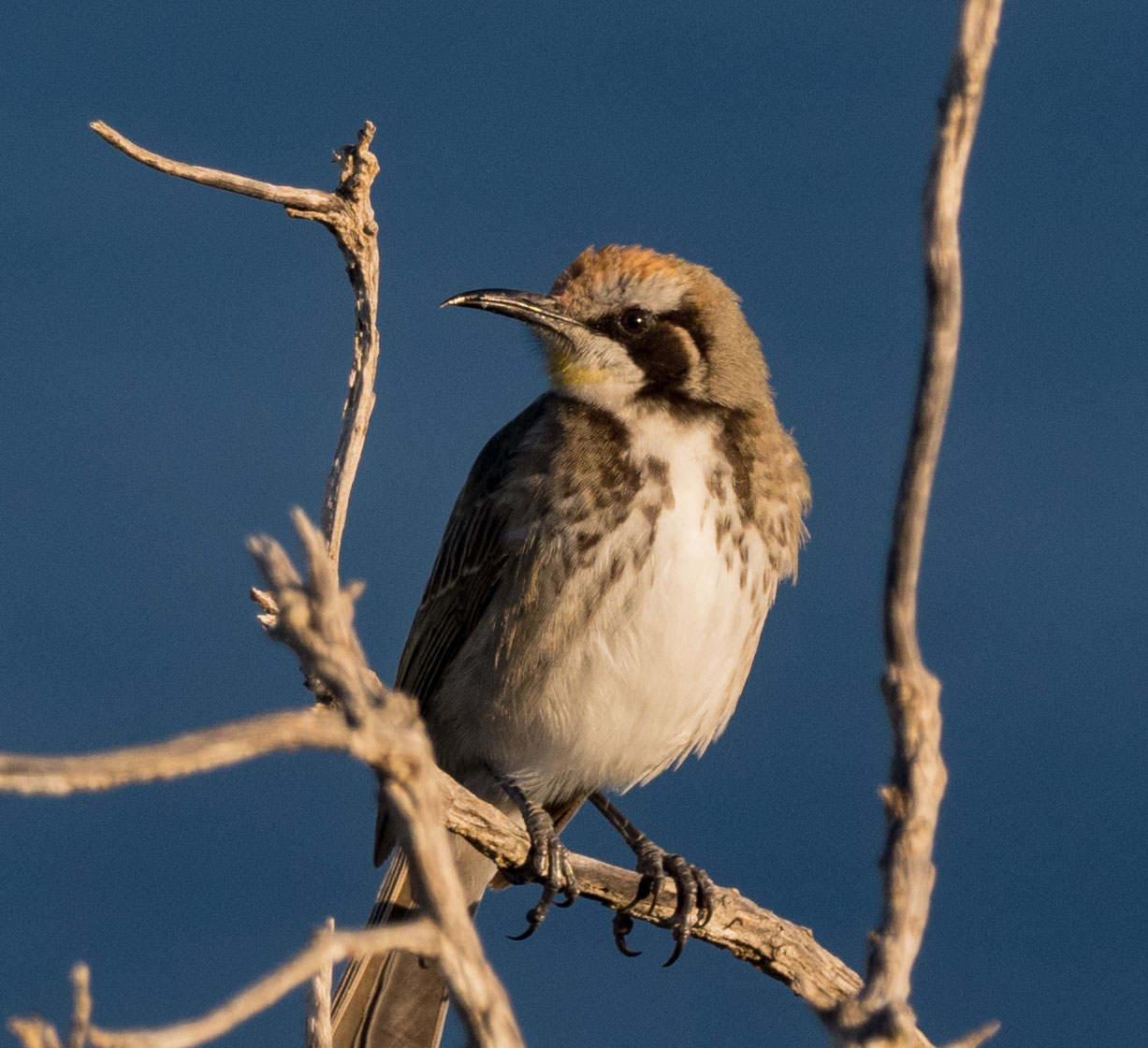Birds of the windy heath

A wander through the coastal heath makes for some tricky birding.
Every environment seems to present distinct challenges for bird watching and bird photography. A visit to Ben Boyd National Park yesterday provided a case in point.
As it nearly always is, the coastal park was swept by strong, chilly winds all day. The vegetation includes small patches of low trees, but for the most part the plants are less than a metre high. The shrubs are typically stiff-leaved, spiny and woody. Rushes and sedges cope by yielding to the wind, and other small plants simply stay low to the ground.
Small birds seem to cope in one of two ways: they either ride the wind and so fly really fast, or they stay low and hidden among the dense heath vegetation. Or perhaps they do both, erupting occasionally in a flash of wings, only to disappear back into the heath just seconds later.
So we consider it a good day of heath birding when we see numerous tiny emu wrens AND nearly step on a ground parrot!
Any sighting of an Eastern Ground Parrot is special, so when one flushed suddenly just metres from us it was all I could do to just blink in amazement. The bird flew low and noisily for about 30 metres, and then dived back into the vegetation. Needless to say, there is no photo.
I was a bit luckier with the emu wrens.
Like the Ground Parrots, Southern Emu Wrens are also heath specialists. They live and feed amongst dense, spiky vegetation and their soft, twittering calls are often the only indication of their presence.
They are tiny birds and rarely fly far - their distinctive long tails seem a real handicap in the air.
It is the tail that gives the birds their common name. There are just six feathers, each with a stiff central shaft supporting a loose series of barbs that barely interlock. Very emu-like indeed!
This is an adult male. He briefly bounced about the branches of a dead banksia, giving us tantalising glimpses of his pale blue throat and generally streaky plumage.
And then he was gone!
The third heath specialist we watched was a little more obliging. Tawny-crowned Honeyeaters fly rapidly and ride the wind, but they also like to call from exposed vantage points.











